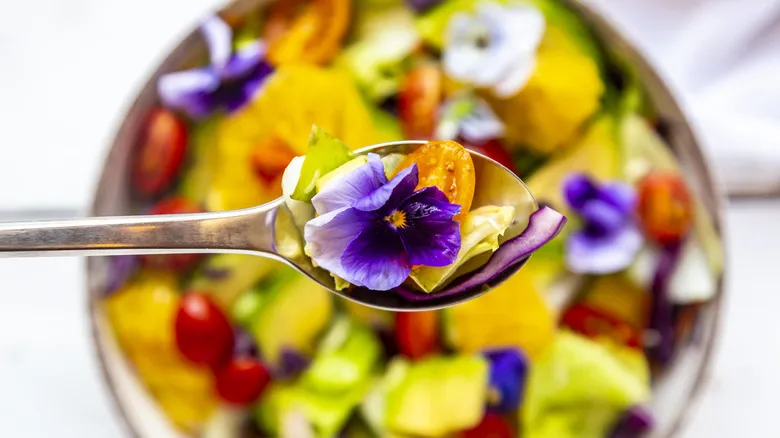Use edible flowers in salads
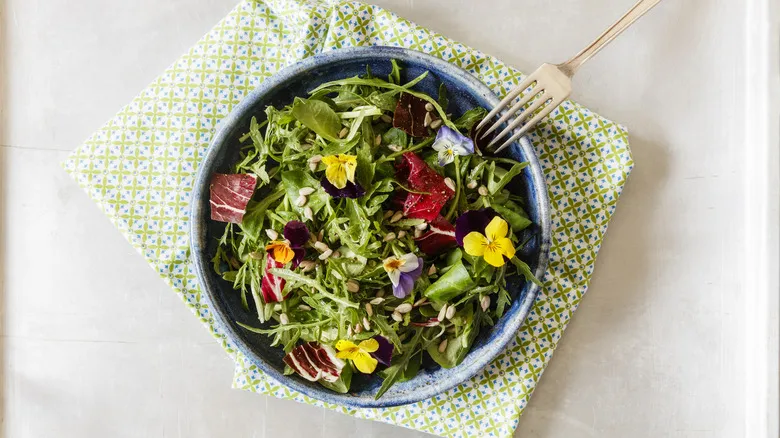
Salads are often quite subtle in appearance (though there are exceptions, such as the often-misunderstood Caesar salad). Typically, they consist of a uniform blend of greens, which can lead to a rather dull reputation. However, introducing a thoughtful splash of vibrant color can dramatically enhance their visual appeal. This subtle addition not only captures the diner's attention but also highlights specific details without overwhelming the overall presentation.
Edible flowers do more than just brighten up a salad; they can also contribute unique flavors depending on the variety selected. Nasturtiums are an excellent choice for beginners, as they are among the most versatile edible flowers. Their delicate, peppery taste pairs beautifully with salad greens. If you enjoy the flavor of watercress, you'll find that nasturtiums offer a similar peppery kick, along with a burst of color to invigorate the dish.
Many popular salad greens come from plants that also produce edible flowers, making it a delightful idea to pair the leaves with their more visually striking counterparts. Arugula, for instance, yields small flowers in bright white and yellow hues. These blossoms share the same mild peppery flavor as the leaves, making them a seamless addition to salads.
Garnish a cocktail with edible flowers
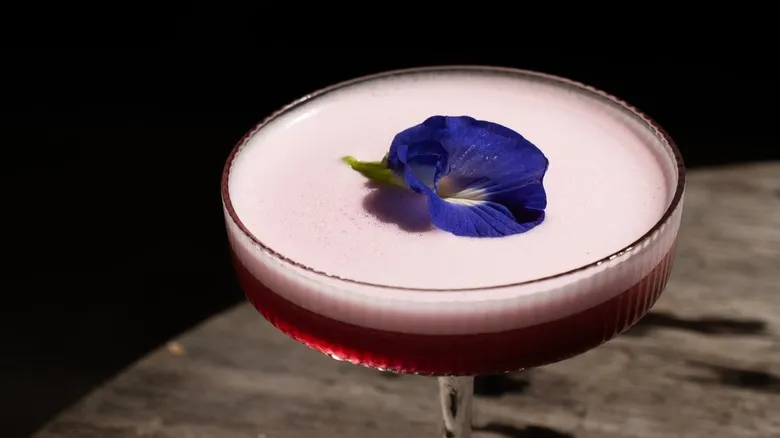
Presentation plays a crucial role in cocktails, but it's important to maintain a level of subtlety. When using edible flowers to adorn your drinks, consider the cocktail's color and select blossoms that provide a striking contrast to enhance visual appeal.
You can simply let a flower float on the drink's surface, reminiscent of a lily on a pond, or place it on the rim of the glass. For a more creative yet easy approach, try making edible flower ice cubes by placing blossoms in an ice tray filled with water, which can then be used to chill your beverages.
The most favored flowers for cocktail garnishes are typically those with a gentle fragrance, as their aromas can elevate the drink without overwhelming its flavor. Lavender and violas are popular choices for this reason. If you're looking for a garnish that adds a bit more flavor, consider honeysuckle, which offers a sweet, honey-like nectar that can be squeezed directly into the drink.
Make candied flowers to decorate desserts
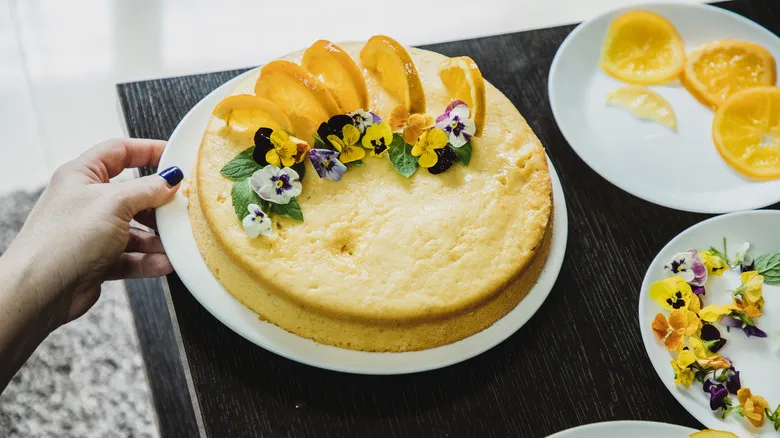
If cocktails are the epitome of visual appeal in beverages, then desserts undoubtedly hold the title for the most visually stunning foods. Just like with cocktails, the way a dessert is presented is crucial. The desire to captivate the eye is more important than ever, but there's also the danger of overdoing it. Incorporating edible flowers is a wonderful way to achieve an elegant balance in cake decoration, and you can elevate their charm by candying the petals.
Candied flowers, or crystallized flowers, require just a few ingredients to create. However, executing this technique demands a gentle touch—one might even describe it as refined. You'll need edible flowers, egg whites, and superfine sugar (known as caster sugar in the U.K.). Begin by thoroughly beating the egg whites with the sugar, then delicately brush the mixture onto the flower petals. Alternatively, you can apply the egg whites first and then sprinkle the superfine sugar on top.
Allow the candied flowers to dry overnight at room temperature. In humid climates, this process may take a full day or longer. To expedite drying, consider adding a drop or two of vodka to the egg whites. You could even opt for flavored vodka to impart a subtle, delightful note to your desserts. These beautiful creations can be used to adorn cakes, ice cream, sorbets, and pastries.
Infuse oil or butter with flowers
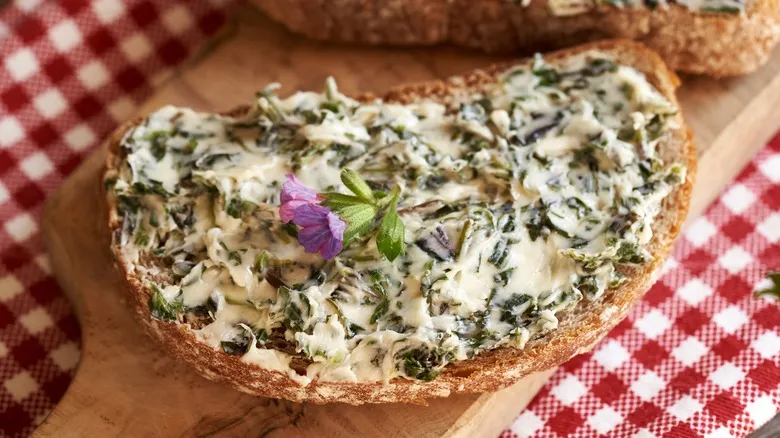
Edible flowers serve a purpose beyond mere decoration. If you're seeking a visually appealing and inventive method to incorporate them into your meals, think about creating a compound butter or infused oil featuring these blossoms. To prepare a floral oil, simply immerse flower petals in a jar of olive oil and allow it to steep for two to four weeks. It's wise to choose flowers from culinary herbs like chives, as these are already favored for infused oils. A floral oil is particularly striking when used at the table for drizzling over salads or for dipping bread.
Crafting a compound butter with edible flowers is even more visually stunning, transforming the classic combination of bread and butter into something truly sophisticated. One of the simplest approaches is to create a floral butter board by spreading a layer of softened butter and then adorning it with flower petals and herbs. Alternatively, you can blend softened butter with chopped flower petals and herbs to achieve an even distribution of color. Afterward, shape the butter into a log and gently press whole flowers into the sides for an elegant finishing touch.
Garnish practically any dish

While the previously mentioned uses are the most popular ways to incorporate edible flowers, there are virtually no strict guidelines on how to include them in your culinary creations. One important point to remember is that you should avoid cooking edible flowers, as heat can dull their vibrant colors. This is why they are primarily used as garnishes. When it comes to which dishes to enhance with these flowers, the choice is yours, but here are a few final ideas you might find inspiring.
Edible flowers make a lovely addition to toasts, especially avocado toast, where they provide a vibrant pop of color to contrast the otherwise uniform green spread. This can create a visually appealing photo that caters to the internet's love for avocado toast. Sticking with the breakfast theme, you can also use edible flowers to embellish yogurts and parfaits. If you're leaning towards a main course, consider a refreshing gazpacho adorned with edible flowers. Specifically, pairing green gazpacho with borage, a striking blue flower that has a cucumber-like taste, can be delightful.
The kitchen is your creative space, so don’t hesitate to incorporate edible flowers wherever you think they fit, especially alongside fresh produce—both fruits and vegetables. It's advisable to choose dishes that don’t have an overwhelming mix of flavors, as this can overshadow the subtle notes of the flowers. The more subtle and refined the dish, the more the flowers will stand out.
Recommended
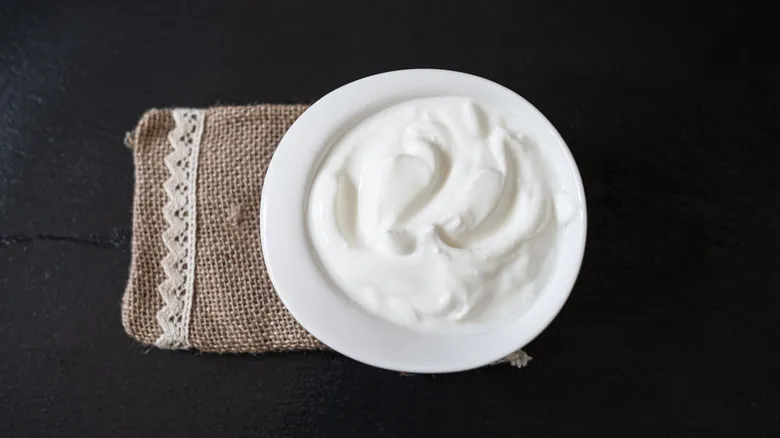
Transform Heavy Cream Into Sour Cream With One Easy Addition
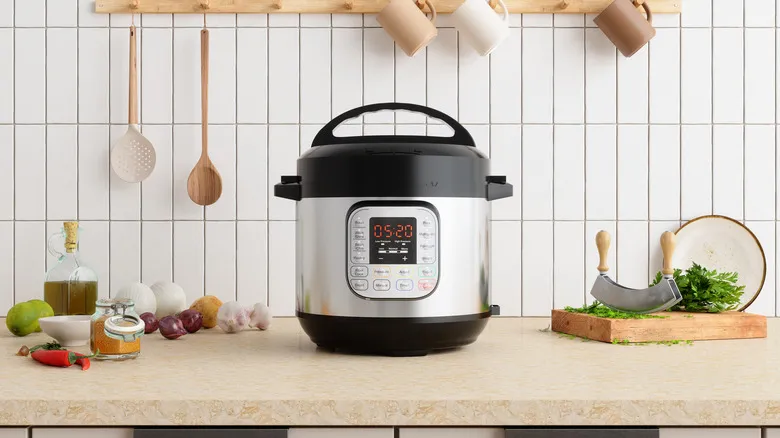
The Clever Foil Hack To Make 2 Slow Cooker Dishes At Once
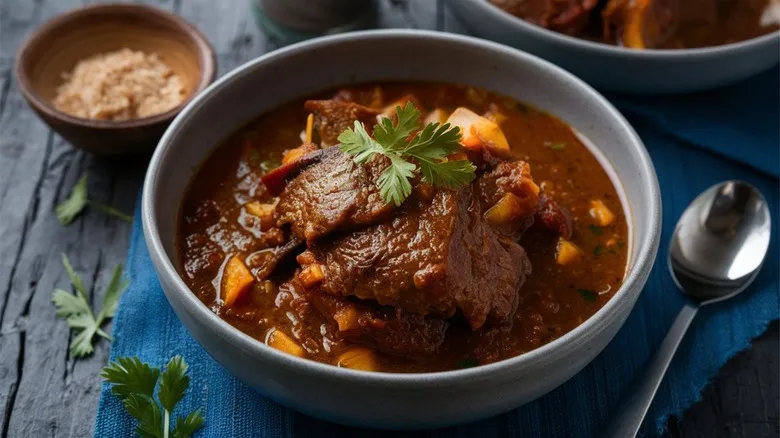
The Secret To Super Tender Oxtail According To Kwame Onwuachi
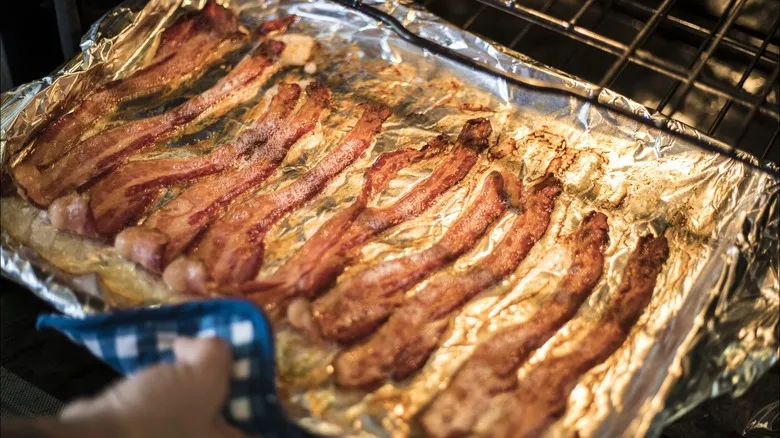
What's The Best Temperature To Cook Bacon In The Oven, Really?
Next up

